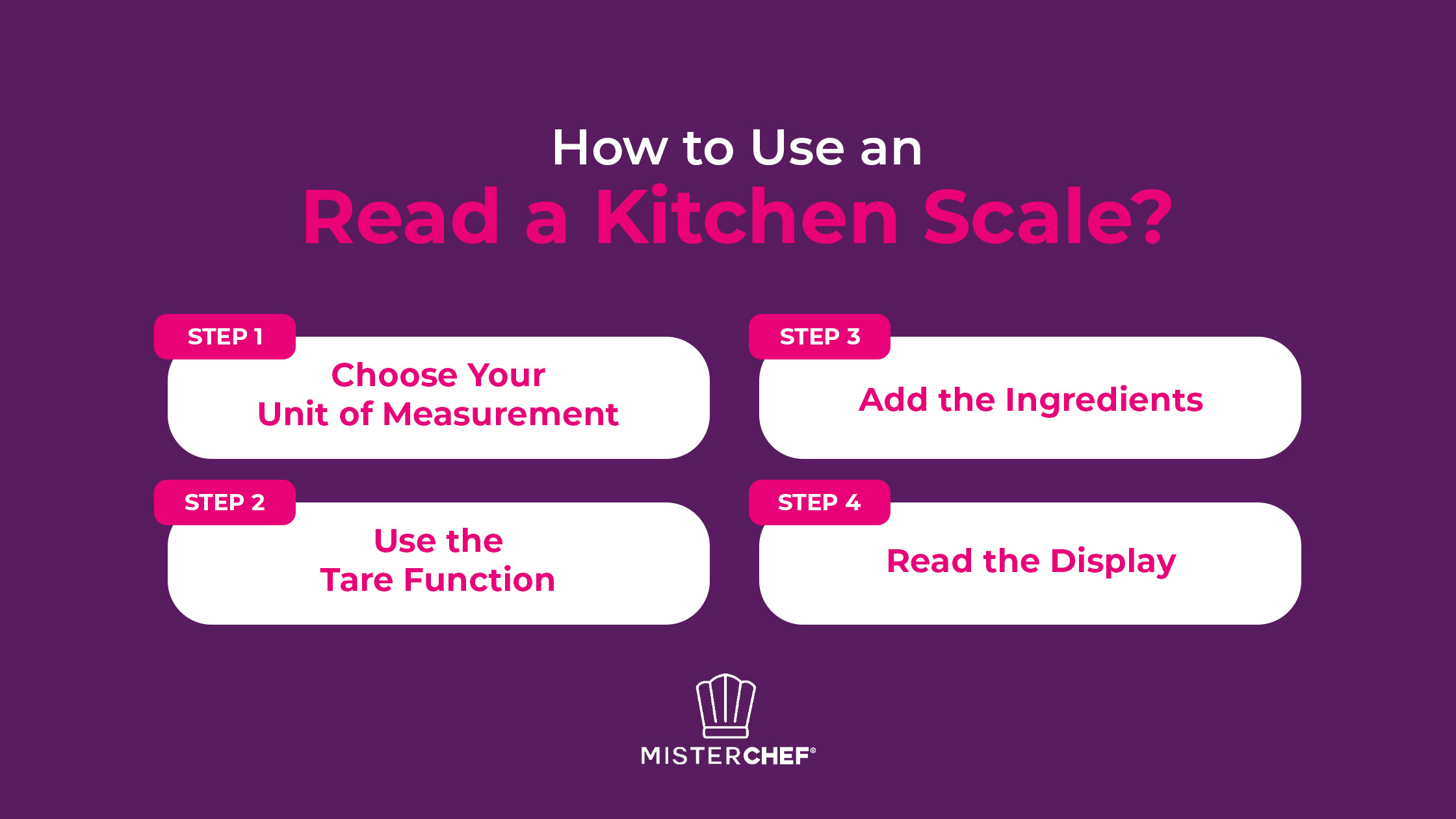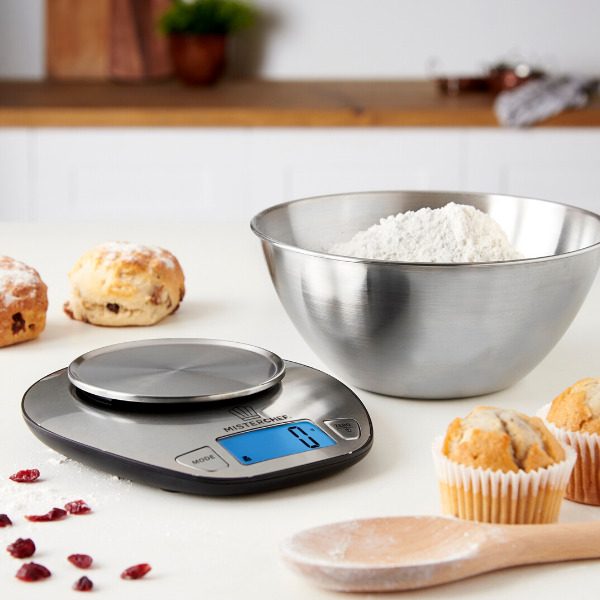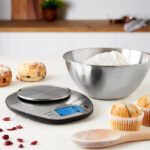Kitchen scales are devices that are used to measure ingredients for cooking. It consists of a platform where you place your ingredients in a bowl and a display that shows the weight. It can also be used for portioning your meals so that you can track your diet. Measurements are usually shown in either grams or kilograms, and you can use them for both dry and wet ingredients. In this guide, we’ll show you how to read them.
How to Read a Kitchen Scale

Here are 4 easy steps on how to read a food scale properly, regardless of whether you’re using a digital, balance, or mechanical scale:
Step 1: Choose Your Unit of Measurement
Regardless of the type of scale you’re using, make sure the appliance is on a flat, stable surface. A kitchen countertop works well.
Next, choose your unit of measurement. If you’re using a digital scale, look for a button that says “Unit” or “Mode.” Press this to cycle through the units (grams, kilograms, ounces, pounds) until you find the one you need. For balance and mechanical scales, use the dial (if it has one) to switch between units manually.
Step 2: Use the Tare Function
Before adding ingredients, zero out the scale to account for only the weight of the container. Place your empty bowl or plate on the scale and press the “Tare” or “Zero” button. The display should read zero.
If you’re using a balance scale, add weights to the opposite pan until the scale balances. Then, place your container in the pan, balance again, and note the additional weights used. If you’re using a mechanical scale, use the knob or wheel to set the pointer to zero.
Step 3: Add the Ingredients
Slowly add your ingredients to the container. The display will change as you add more weight. Add ingredients until you reach the desired weight. Make sure no items are hanging off the edge of the container, as this can affect the reading.
Step 4: Read the Display
After adding your ingredients, wait for a few seconds until the weight reading stabilizes. The final stable number displayed is the weight of your ingredients. Some scales (usually digital) have a light or beep to indicate when the weight has stabilized.
How to Clean a Digital Scale
Start by turning off the scale and unplugging it if it’s electric. Wipe the surface gently with a soft, damp cloth. Avoid using abrasive cleaners or pads, as these can scratch the surface. For sticky residues or dried ingredients, you can use a bit of mild dish soap on the cloth. Make sure not to let any water seep into the electrical components, including the display and buttons.
For digital scales with buttons, use a cotton swab dipped in rubbing alcohol to clean around the edges of the buttons. Once the scale is clean, dry it thoroughly with a soft, dry cloth.
Do You Need to Keep Anything in Mind When Measuring Liquids?
If your scale can measure liquids directly in volume units like milliliters or fluid ounces, make sure it’s set correctly for the type of liquid you’re using since different liquids have different densities.
Also, think about the shape of the container when measuring. Shallow containers spread the liquid too thin, making it hard for the scale to detect slight changes in weight. Use a taller, narrower container instead.
Can You Use a Measuring Cup or Measuring Bowl Instead?
Yes, you can use measuring cups, measuring bowls, or measuring spoons, but they might not provide the same accuracy, especially for dry ingredients that need precise measurements like cake flour or brown sugar. However, they do work well for liquid ingredients.
FAQs
What’s a mechanical scale?
Mechanical scales are similar to digital scales but instead of relying on batteries, they use a spring mechanism to measure weight. Also, instead of a digital display, they have a dial or pointer that displays the weight.
What’s a Balance Scale?
A balance scale has a horizontal beam that balances on a central point, with pans hanging from both ends. To use it, you typically place the object to be weighed in one pan and add weights to the other pan until the beam is level. This type of scale does not require any power source.
Can I use any container on the kitchen scale?
Yes, you can use any container like a mixing bowl as long as it fits comfortably on the platform of your kitchen scale. Just remember to tare or zero out the actual weight of the container before adding ingredients.
What should I do if my scale shows an error message?
If this happens, check to ensure that it is placed on a stable surface and that the ingredients are evenly spread. If the issue persists, check the user manual for troubleshooting tips or contact the manufacturer.
Can I weigh multiple ingredients at once?
Yes, you can weigh multiple ingredients at once by using the tare function to reset the display after each addition.
Summary
Mastering the art of reading a kitchen scale may seem daunting at first, but with practice and patience, you’ll soon become a pro. By following these simple guidelines and making the most of your kitchen scale, you’ll be able to improve your cooking game.
Want to take your cooking precision to the next level? Check out the MisterChef kitchen scale. Perfect for those who value accuracy in their cooking, the MisterChef scale is easy to use and reliably accurate. Shop with us today.







